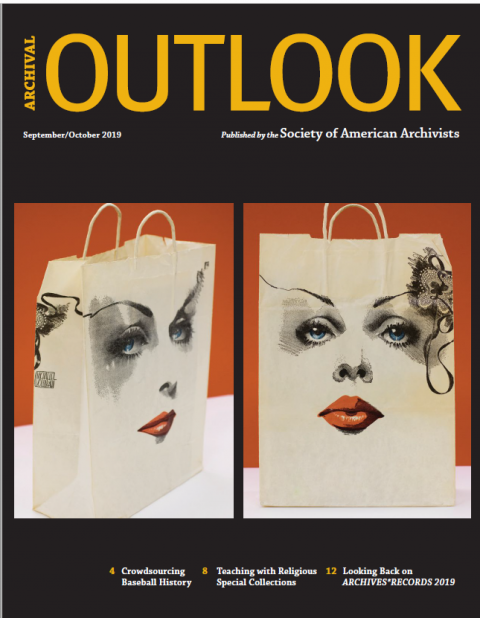- عربي
- 中文
- English
- Français
- Русский
- Español
We the People of the United Nations

Document Summary:
The Ban Ki-moon Archival Project
Aleksandr Gelfand and Stephen Haufek, Archives and Records Management Section, United Nations
Continued on page 29>>
UN Secretary-General Ban
Ki-moon briefs press in Geneva.
UN Photo/ Jean-Marc Ferré.
Courtesy of UN Archives,
Simon Griffee.
How can the nations of the world
unite to fight piracy off
the coast of Somalia, provide
assistance to Myanmar
following a deadly typhoon,
and ensure that global
development is done in
a sustainable manner?
These are some of the
questions that confronted Ban
Ki-moon, the eighth Secretary-
General of the United Nations,
during his decade-long tenure from
2007 to 2016 and that can be found
in his records.
Born in Japanese-occupied Korea in
1944, the future chief administrative
officer of the United Nations decided to
embark on a path of public service as a
young man, following an encounter with
President John F. Kennedy in 1962. The
American president, standing on the South
Lawn of the White House, had addressed a
group of foreign visitors that included Ban
Ki-moon, telling the assembly, “There are no
national boundaries, there is only a question
of whether we can extend a helping hand.”
More than fifty years after that meeting, as
Ban Ki-moon’s second term was coming to
a close, the United Nations’ Archives and
Records Management Section
(ARMS) began a multi-year
effort to process, digitize,
and review the records of the
Secretary-General to make
them available to the largest
possible constituency: the world.
Arrangement, Description,
and Classification
The United Nations is the world’s
largest international organization,
with a broad mandate that includes
maintaining worldwide peace and security, protecting
human rights, and
solving economic
and social
problems
through
sustainable
development.
The allencompassing
nature of its
activities makes
the United Nations’
institutional archives
an invaluable source of
information to a wide
variety of researchers
and is indispensable
for providing accountability to its 193
Member States. It also made this archival
project a highly visible endeavor.
The project began in late 2015 when the
Executive Office of the Secretary-General
(EOSG) began transferring the records
of Ban Ki-moon’s early years to ARMS’
custody. Once there, a team of processing
archivists—sometimes as many as six
working concurrently—began tackling
the contemporary archives of the United
Nations’ most senior
diplomat.
Due to the nature
of the information
handled by the
United Nations,
records are
classified by
their creators
according to
their sensitivity.
A key part of
processing included
reviewing and arranging
each record at the item
level into subfolders based on their classification and using
screening guidelines that were developed
in coordination with the EOSG. This meant
that the processing archivists had to engage
with the records’ content with an eye not
only to their description but also their
security classification.
The United Nations uses three levels of
security classification which are meant to
represent the risk
the information may
cause if released:
unclassified,
confidential, and
strictly confidential.
Archives falling
in the first two
categories are
automatically
declassified after
20 years. Strictly
confidential
archives, however,
are declassified only
following an ad hoc review by a subject
matter expert. Because Ban Ki-moon’s
archives are less than 20 years old, each
record had to be reviewed by a competent
authority prior to disclosure. Having records
aggregated at a subfolder level according to
their classification was critical to facilitating
their subsequent declassification.
A Million Pages in
Multiple Languages
Following processing, the records were
passed to a digitization team based in
the same office. This ensured that any
questions regarding the arrangement and
description were immediately addressed
by the processing archivists. Each item,
whether a single-page letter or a hundredpage
report, was digitized as a discrete file. A preservation master was made as a color
TIFF. After a quality review was completed,
pages were converted to PDF access files,
which were OCRed and could be put online
for easy viewing and downloading.
The next step of the project involved
individuals selected by the Executive
Office of the Secretary-General reviewing
each record and deciding on its disclosure.
These individuals had worked in different
capacities and in various offices in the
organization for decades and were keenly
aware of the political and legal sensitivities
that are involved in the disclosure of
United Nations records. They were also
knowledgeable in multiple languages and
read more than a million pages, making the ultimate
decision on
the disclosure
of each
document,
taken in
accordance with United
Nations policy. Although decisions
were based on the content of the records,
they were informed by the classification and
arrangement completed by the processing
archivists. Nonetheless, archives that
were “unclassified” were in some cases not
released, and others, classified as “strictly
confidential,” were.
Ready for the World
The last step of the project consisted
of uploading the PDF access files to the
ARMS website and promoting the project throughout the
United Nations and to
researchers worldwide.
The Ban Ki-moon
Archival Project took
more than two years
to complete, due to the gradual
accretion of records received from the
Executive Office of the Secretary-General
for processing and digitization. The last of
Ban Ki-moon’s records were transferred to
ARMS in the year following his tenure. The
finished product totaled nearly 600 linear
feet of materials, housed in more than
1,100 boxes. Digitized, these files consist
of more than 100,000 individual
documents, the majority of which are now
accessible to all citizens of the world via the
United Nations Archives website. Go check
them out at https://search.archives.un.org
/secretary-general-ban-ki-moon-2007-2018.
Link to an External Document:

